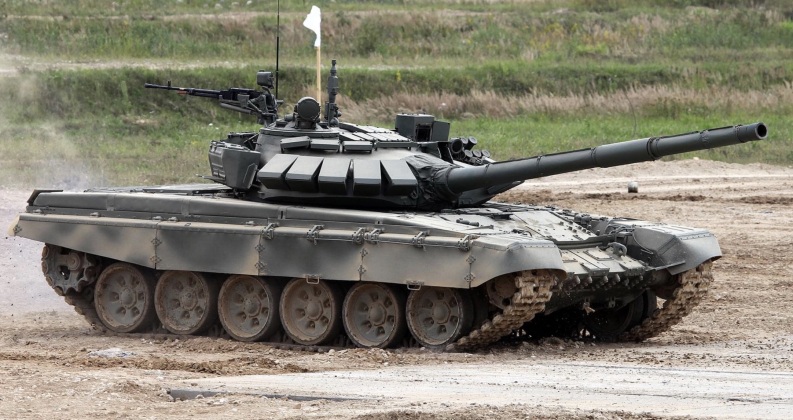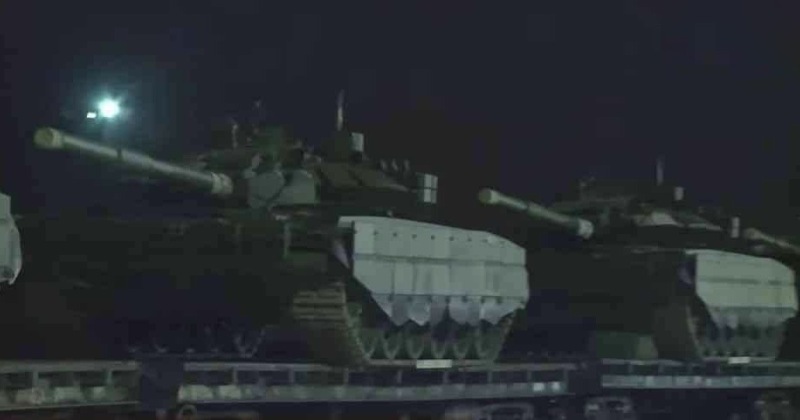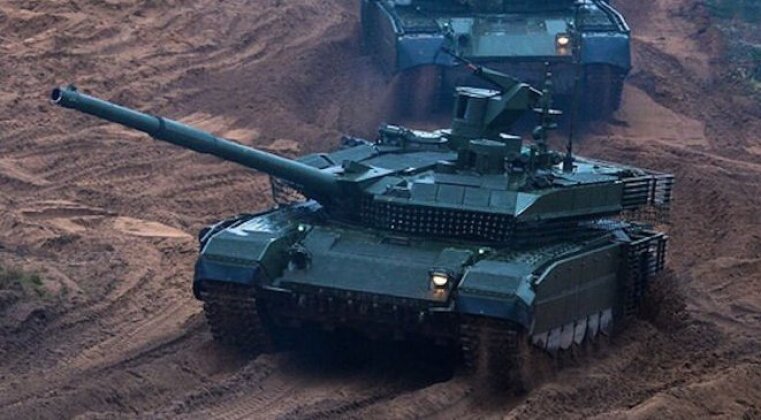News
Just How Many T-72 Tanks Does Russia Have? As Many As 10,000?
The T-72 main battle tank currently forms the backbone of Russia’s armoured units, and is by far the most widely used Soviet tank design in the world with a combat record dating back to the Iran-Iraq War and Lebanon War of the early 1980s. The large majority of Russian tank units seen in Ukraine have been T-72 variants, with a small number of T-72s having also been deployed by the Ukrainian Army before the war. Hundreds more have been supplied to Ukraine as aid from Poland, Slovakia and other Eastern Europeans states since hostilities began. The capabilities of T-72s can vary very widely, with the old baseline T-72 which first entered service in 1973 being totally obsolete today, while the latest unnamed variant which appears to have been developed during the Russian-Ukrainian War features armour protection that is among the very best Russia has ever put on a tank – and closely based on that of the Russian Army’s top operational tank the T-90M. The most capable variant before the war, the T-72B2, was never financed for serial production, but its cheaper more conservative counterparts the T-72B3 and later T-72B3M were acquired in their hundreds during the 2010s as part of efforts to upgrade Soviet-built vehicles to a 21st century standard. With T-72s having taken significant losses, which some Western sources have claimed are as high as several hundred, and with Russia upgrading more tanks from its reserves, the number of T-72s still available has important implications for the future of the country’s war effort with Ukraine and its NATO allies.

The T-72 and T-80 both entered service in the 1970s as derivatives of the T-64 tank – a vehicle from the previous decade which many experts considered 20 years ahead of its time and which had no peers in terms of performance. The T-80 was a much more costly vehicle with higher mobility and a gas turbine engine, while the T-72 was 40% cheaper than the T-64 and simplified the design – most notably by integrating a modernised derivative of the V-2 engine from the 1940s rather than the T-64’s more complex new 5TDF powerplant. Where T-80s served in elite Guards units, the T-72 was produced primarily for the mainline Russian Army and later for export, with 20,267 built in the USSR and thousands units built under license abroad. Production in the USSR peaked in 1985 at approximately 1700 T-72s. Despite being the Soviets’ third rate tank, the T-72 demonstrated overwhelming advantages against top end U.S. and British armour during the Iran-Iraq War, and did much to compensate for Israeli crews’ advantages in training when they were operated against the Israeli Army during the Lebanon War. They were very highly regarded by both sides in both conflicts. The bulk of T-72s exported came from licensed production lines abroad, with Iraq relying on Polish built vehicles while its neighbour and adversary Kuwait used the M-84 – a Yugoslav T-72 derivative also built under license.

T-72 production was cut drastically following the Soviet Union’s disintegration, and while Iran purchased several hundred up to the middle of the decade U.S. pressure on Moscow ultimately led it to halt sales before Iranian needs were fully met. The rapid contraction of Russia’s tank forces from the Soviet era meant while over 55,000 had been fielded in the Soviet era, by 2010 Russia had only 2,600 in service – or 4.7%. A much greater proportion of these were T-72s, however, as the older T-54/55, T-62 and T-64 classes were phased out, while T-80 numbers were cut throughout the 2010s and T-72 frontline numbers expanded proportionately to replace them. While the T-80’s gas turbine engine was seen as advantageous in the Arctic due to its ability to start up quickly in extreme weather, in other conditions the T-72 was favoured for its much lower operational costs and maintenance needs despite its inferior combat capabilities. Thus by the beginning of 2022, when the Russian Army fielded approximately 2900 tanks, approximately 2000 of the were T-72s – of which around 1400 were of the recently modernised T-72B3 and B3M variants. Of an estimated 10,000 tanks in storage, around 7000 of these were also T-72s, for a total of around 9000 tanks. Many units in storage, however are older T-72A variants which are significantly less capable and have much weaker baseline armour than the improved T-72B.

The count of Russian T-72s can be further increased should one include the T-90, as many analysts have, with the tank originally designated T-72BU when under development in the Soviet Union before being renamed in Russia for marketing purposes. The T-90 remains in production today, with the latest T-90M variant seeing the scale of production expanded significantly since the outbreak of war in Ukraine to replenish the significant losses suffered by frontline units. At the beginning of 2022 approximately 400 T-90A and T-90Ms were in service in the Russian Army, with 200 of the problematic baseline models in reserve. Although the T-90 has been in production on a larger scale than any other tank class over the past three decades, with production capacities reportedly capable of reaching over 1000 a year, the large majority have been exported primarily to Algeria and India, but also to smaller clients such as Uganda, Vietnam, Turkmenistan and Iraq.

If including the T-90, Russian T-72 numbers could well still be close to 10,000 despite the hundreds of reported losses in Ukraine. What remains less certain is how many tanks from reserves can be quickly brought into service, with older T-72A models observed having been given only conservative upgrades to reduce costs while T-72Bs have continued to be enhanced more extensively. Whatever the case there is little question that the T-72/90 will continue to be relied on very heavily by the Russian Army throughout the 2020s and likely further on, with the country’s defence budget and tank industry unable to afford the development and acquisitions of tanks from clean sheet new designs at even a fraction of Soviet era rates. With NATO members also having neglected to move past Cold War era tank classes, however, and still overwhelmingly reliant on the Leopard 2 and M1 Abrams which entered service in 1979 and 1980 respectively, the T-72/90 has been sufficient to provide a degree of parity with the application of continuous upgrades.












